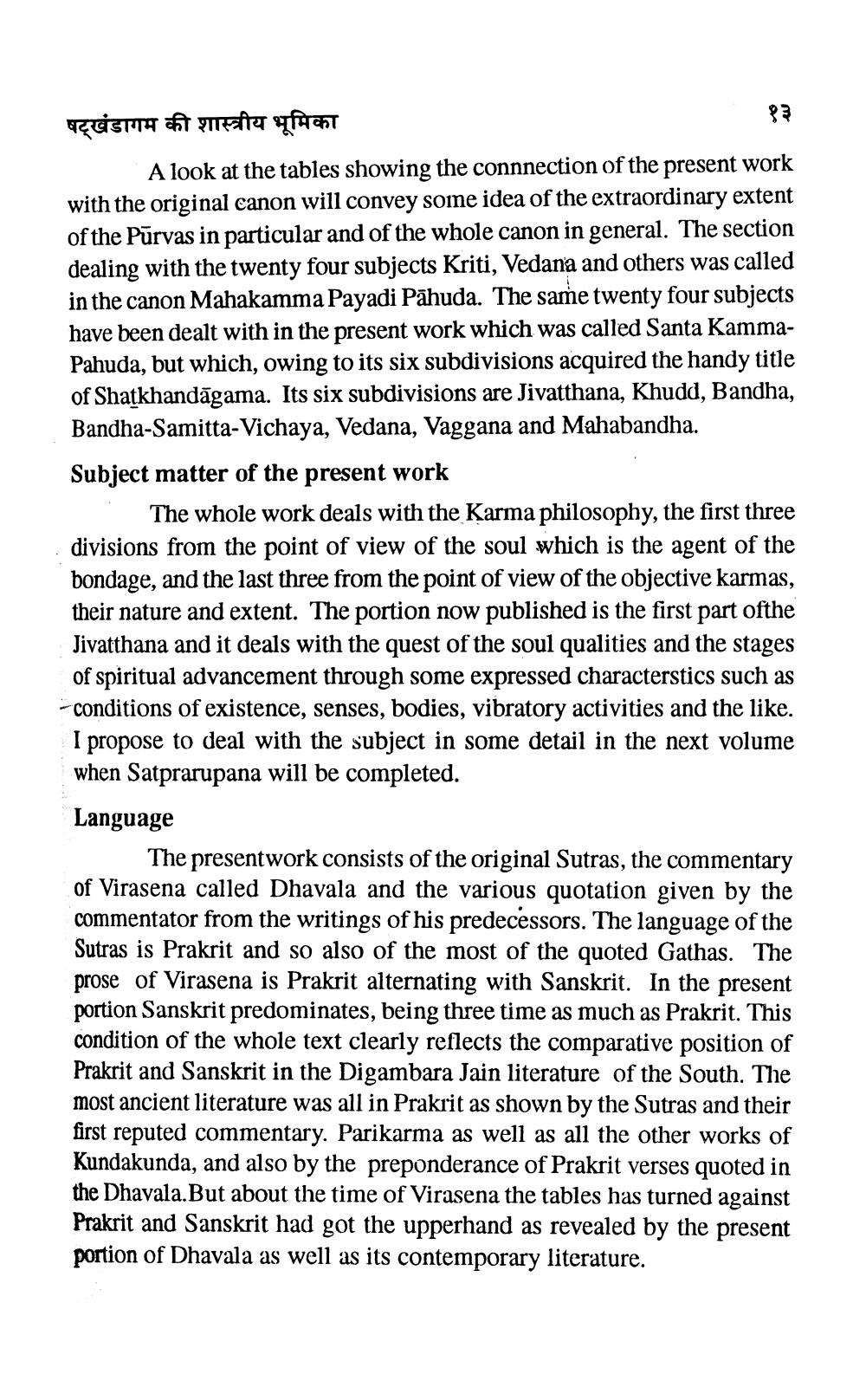________________
षट्खंडागम की शास्त्रीय भूमिका
A look at the tables showing the connnection of the present work with the original canon will convey some idea of the extraordinary extent of the Pūrvas in particular and of the whole canon in general. The section dealing with the twenty four subjects Kriti, Vedana and others was called in the canon Mahakamma Payadi Pāhuda. The same twenty four subjects have been dealt with in the present work which was called Santa KammaPahuda, but which, owing to its six subdivisions acquired the handy title of Shatkhandāgama. Its six subdivisions are Jivatthana, Khudd, Bandha, Bandha-Samitta-Vichaya, Vedana, Vaggana and Mahabandha. Subject matter of the present work
The whole work deals with the Karma philosophy, the first three divisions from the point of view of the soul which is the agent of the bondage, and the last three from the point of view of the objective karmas, their nature and extent. The portion now published is the first part ofthe Jivatthana and it deals with the quest of the soul qualities and the stages of spiritual advancement through some expressed characterstics such as -conditions of existence, senses, bodies, vibratory activities and the like.
I propose to deal with the subject in some detail in the next volume when Satprarupana will be completed.
Language
The presentwork consists of the original Sutras, the commentary of Virasena called Dhavala and the various quotation given by the commentator from the writings of his predecessors. The language of the Sutras is Prakrit and so also of the most of the quoted Gathas. The prose of Virasena is Prakrit alternating with Sanskrit. In the present portion Sanskrit predominates, being three time as much as Prakrit. This condition of the whole text clearly reflects the comparative position of Prakrit and Sanskrit in the Digambara Jain literature of the South. The most ancient literature was all in Prakrit as shown by the Sutras and their first reputed commentary. Parikarma as well as all the other works of Kundakunda, and also by the preponderance of Prakrit verses quoted in the Dhavala.But about the time of Virasena the tables has turned against Prakrit and Sanskrit had got the upperhand as revealed by the present portion of Dhavala as well as its contemporary literature.




